Affiliate links on Android Authority may earn us a commission. Learn more.
How to connect your laptop to a monitor
Adding an extra monitor can do wonders for your PC setup. However, did you know you could extend your laptop‘s screen space with an external monitor? You can connect even more monitors to your laptop if you have an HDMI splitter. Doing so allows you to keep working wherever you go. Let’s discuss how to connect your laptop to a monitor.
QUICK ANSWER
To connect your laptop to a monitor via HDMI, plug your HDMI cable into the HDMI ports on your laptop and monitor. Visit Duplicate or extend to a connected display in your Windows settings, then choose either Duplicate these displays or Extend these displays. Click and drag the screens so the setup matches your physical layout.
JUMP TO KEY SECTIONS
How to connect an external monitor to a laptop
If you own a Windows laptop, you will use a monitor cable, like HDMI, DisplayPort, or a USB-C cable, to connect it to the external monitor. Notably, HDMI and DisplayPort have their own pros and cons, so pick the correct port for your needs.
If you’re on an Apple laptop, you will need an HDMI cable or a Thunderbolt-compatible USB-C cable. Because most monitors available today have an HDMI port, we will cover how to connect a laptop to your monitor with an HDMI cable.
Connecting a Windows laptop to an external monitor
Connect your monitor to its included power adapter. Take the other end of the power adapter and plug that into an outlet.
Connect your laptop to its charger, then plug it into an outlet.
TIPS AND TRICKS
If your laptop isn't charging while connected to the external display, it will still work. However, to ensure a fluid experience without any frame dips or freezing, you should always use your laptop plugged in if it's connected to a monitor. You can also make sure your laptop won't die unexpectedly this way.
Locate your HDMI cable. Plug one end into the monitor and the other end into your laptop.
TIPS AND TRICKS
If your monitor doesn't automatically display the contents of your laptop screen or extend it, there's a good chance you're on the wrong input. To counteract this:
- Locate the physical Menu or Settings button on your monitor. Click it in to open up the monitor's settings menu.
- Navigate to the Input section.
- Select the correct input. In this case, switch to the HDMI port that your cable is plugged into.
Your laptop should now be connected to your external monitor.
Duplicate or extend your display
Moving on, you may not like the way your monitor interacts with your laptop. This is to say, the monitor may mirror your laptop screen when you want to use it as extra space. On the flip side, you may want to have the monitor mirroring your laptop so you can use it with the lid closed.
Whatever the case, you can always change this.
Open the Start menu and search for Duplicate or extend to a connected display.
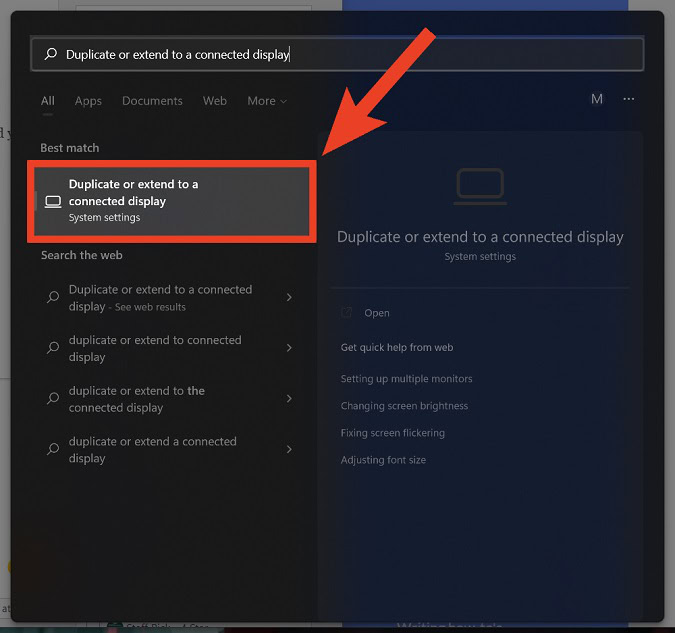
Click the display action dropdown. This appears under the monitor numbers, and it will say either Extend these displays or Duplicate these displays.
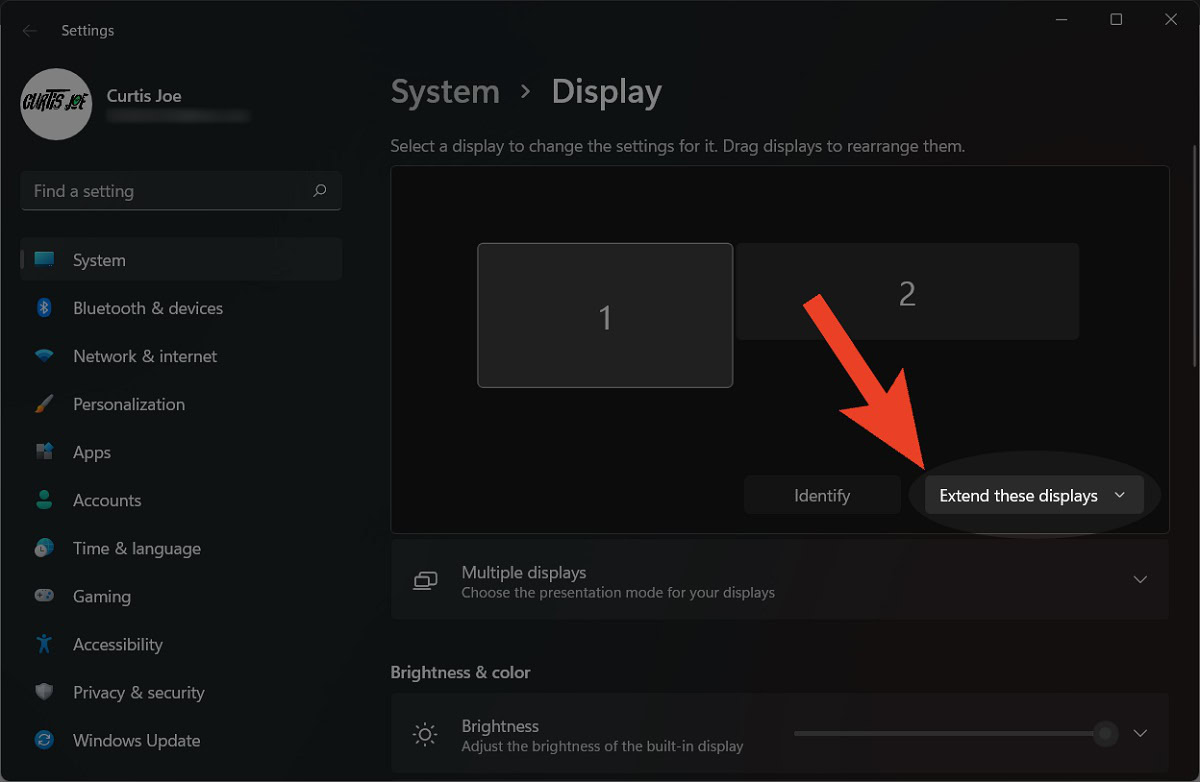
From the options that appear, select Extend these displays if you want to be able to drag your content across from one screen to the other. Select Duplicate these displays if you want the same content to appear on both.
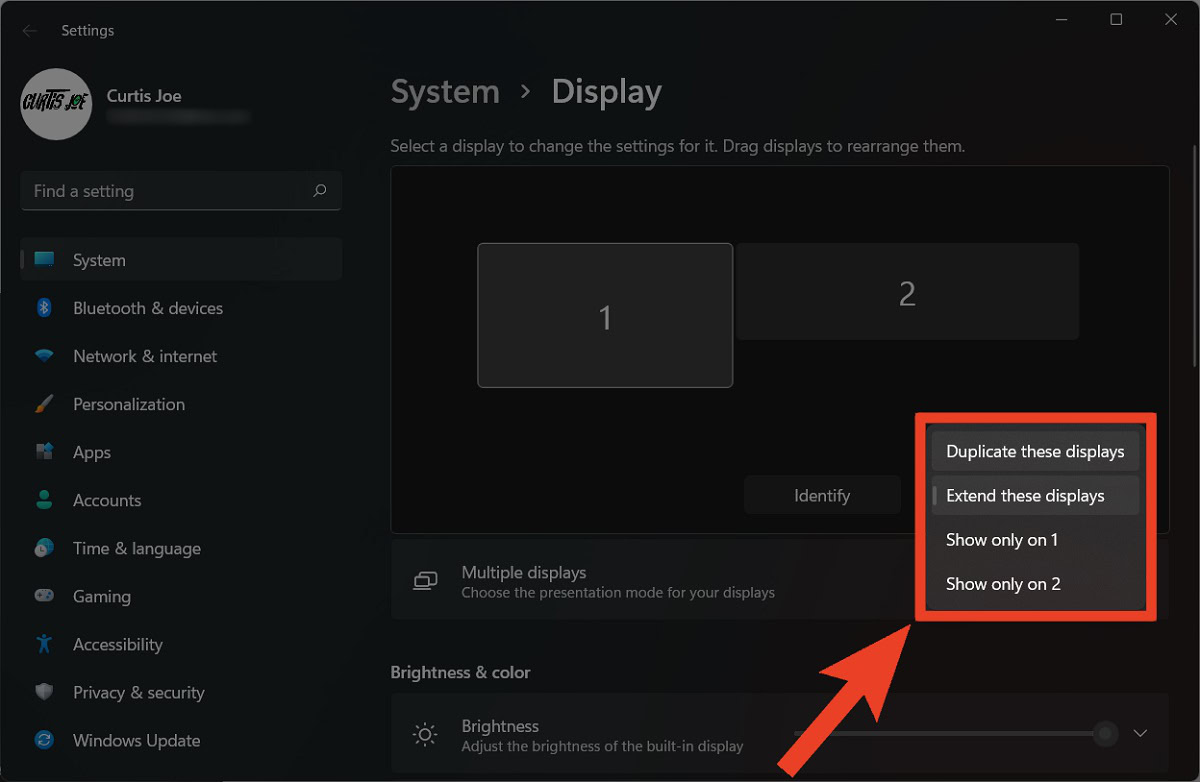
How to use your laptop with the lid closed
If you’re using a Windows laptop, open the Start menu and go to Change what closing the lid does. You can use the search bar at the top to look for this key phrase.
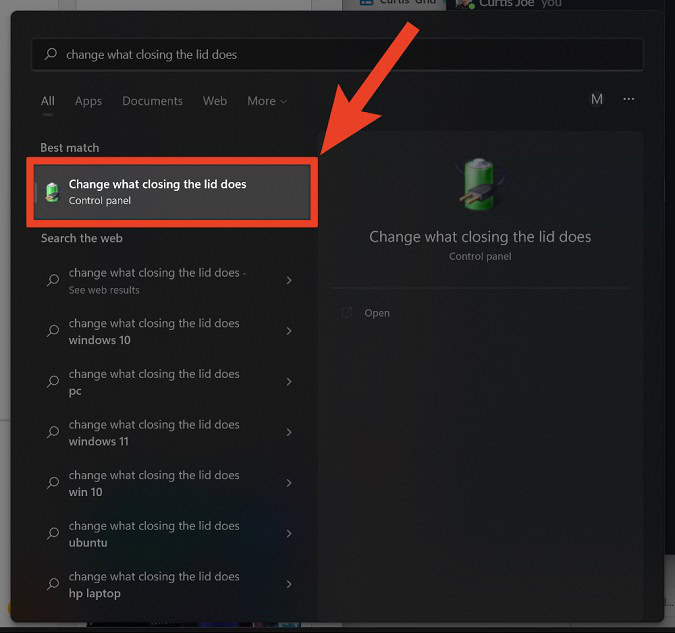
This will take you to the Power and sleep buttons and lid settings page within System Settings. For When I close the lid:
- Click the On battery dropdown (if your laptop is not plugged in and charging).
- Click the Plugged in dropdown (if your laptop is plugged in and charging).
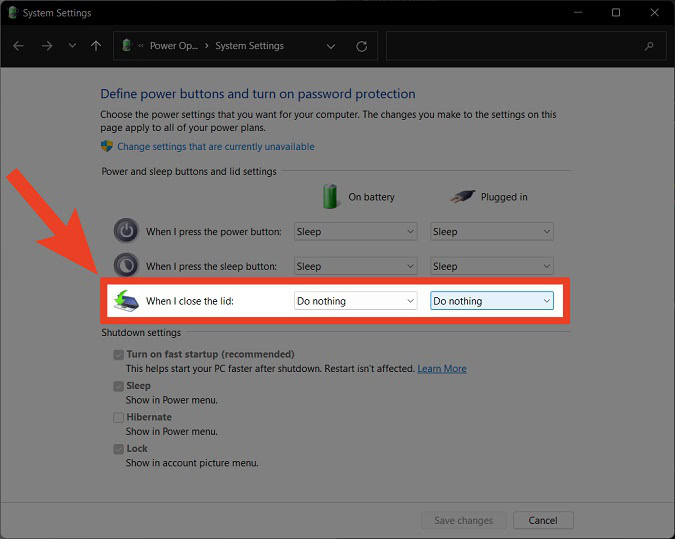
From the following options, click Do nothing to make it so you can continue using your laptop after you close the lid.
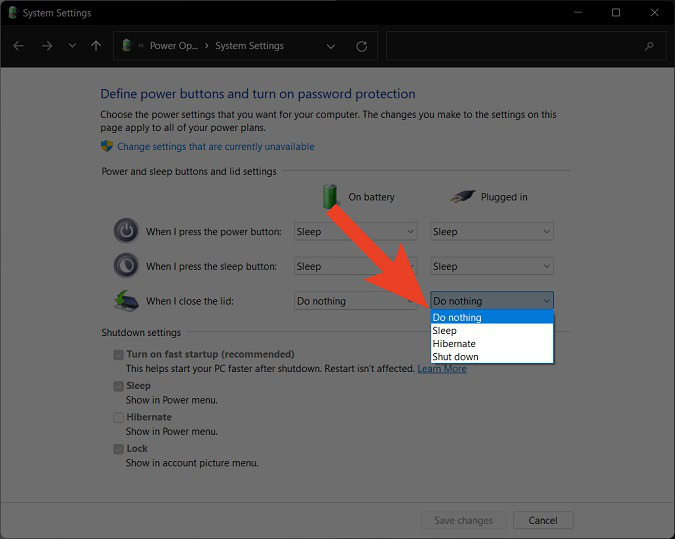
How do you connect an external monitor to a Mac?
When connecting your portable Macbook to an external monitor, you may run into the problem of not having the right connecting cable. Not all Macbooks have an HDMI port; however, they all have a USB-C Thunderbolt port. If you are in this situation, you will need a USB-C to HDMI adapter like this one:
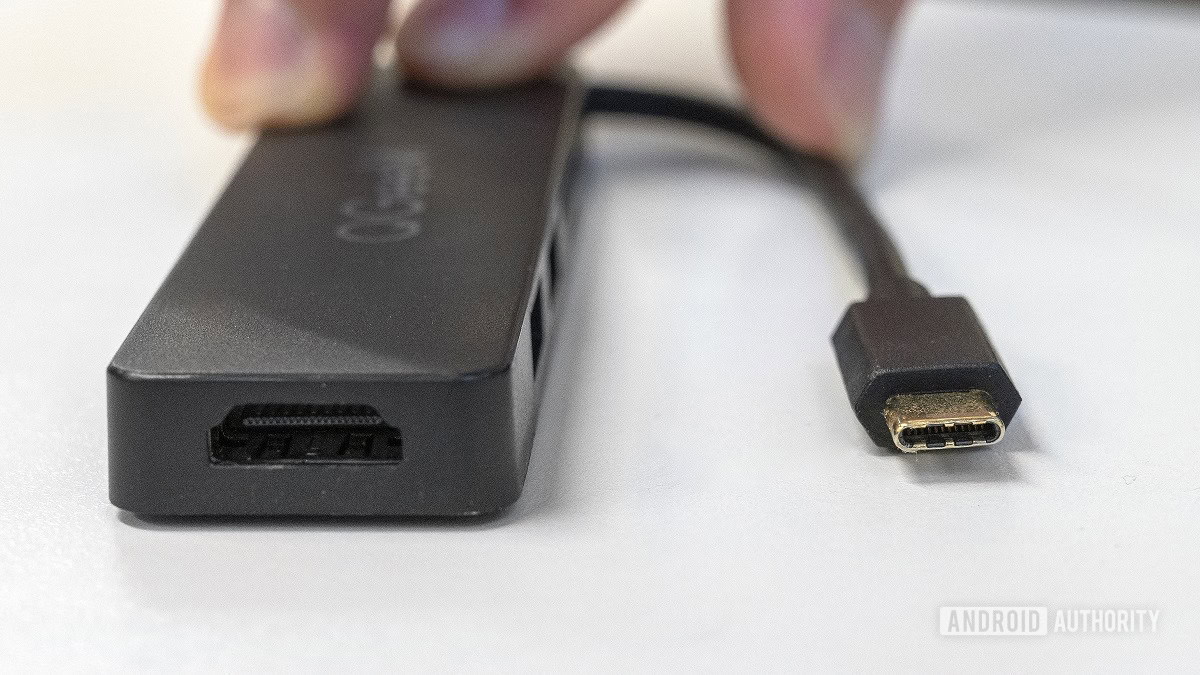
To connect a MacBook to a monitor, use your connecting cable (as well as any necessary adapters) to connect your MacBook to the monitor. Then, to set it up, go to the Apple menu > System Settings….
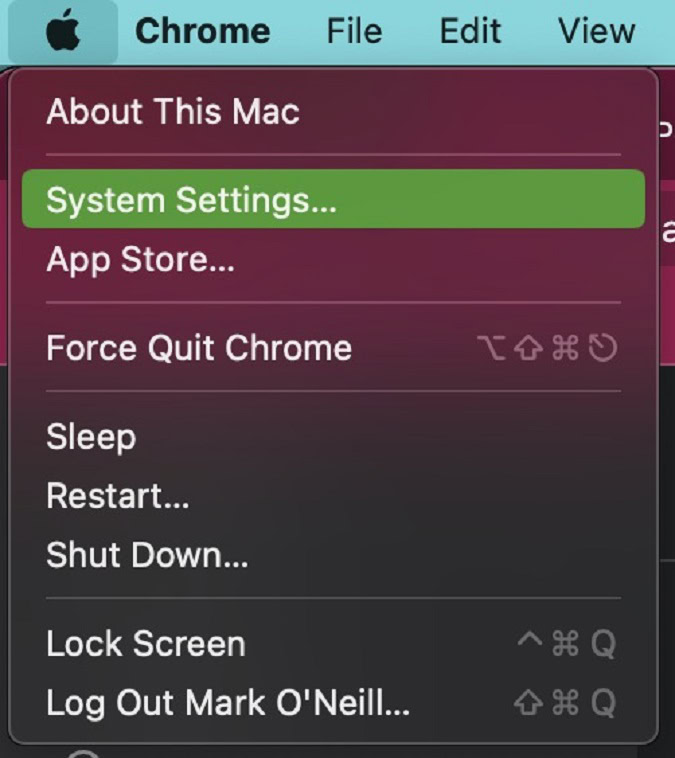
Next, click the Displays tab from the options along the left.
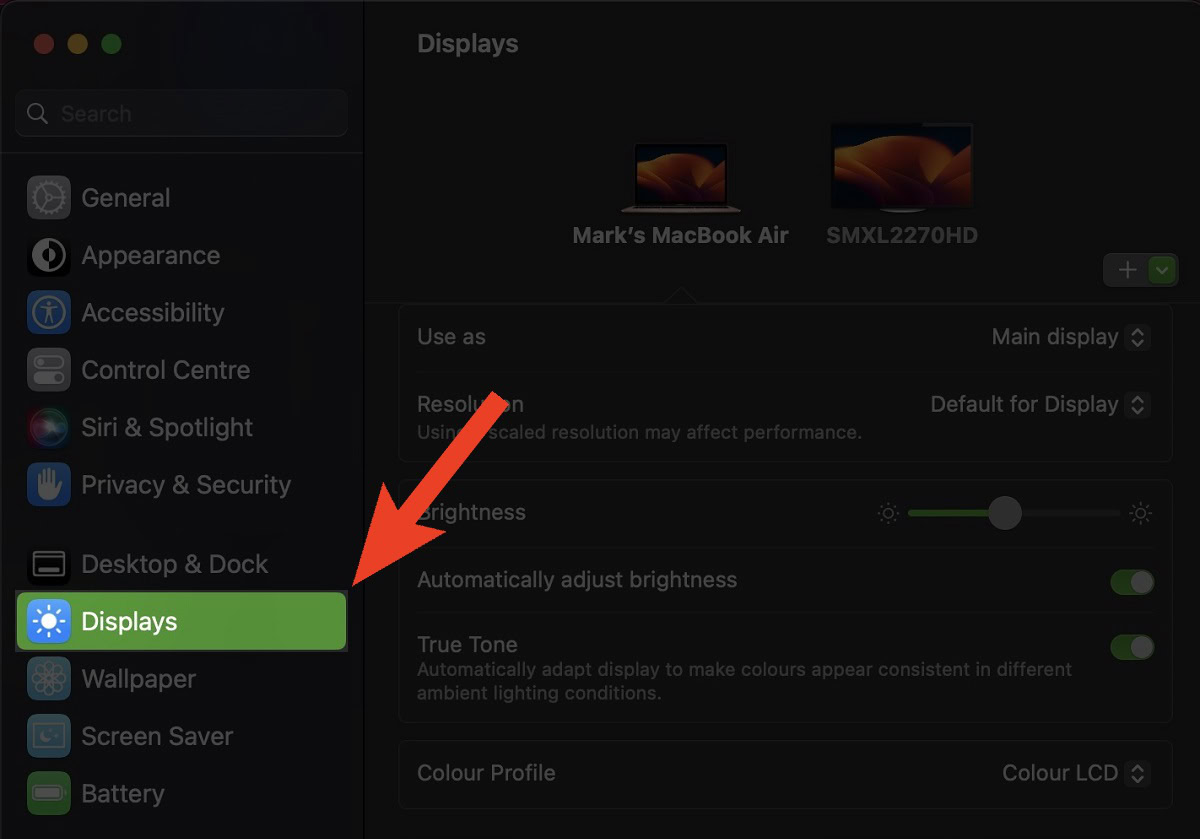
Within Displays, click the Use as dropdown and select Extended display if you want to move content between your MacBook and monitor.
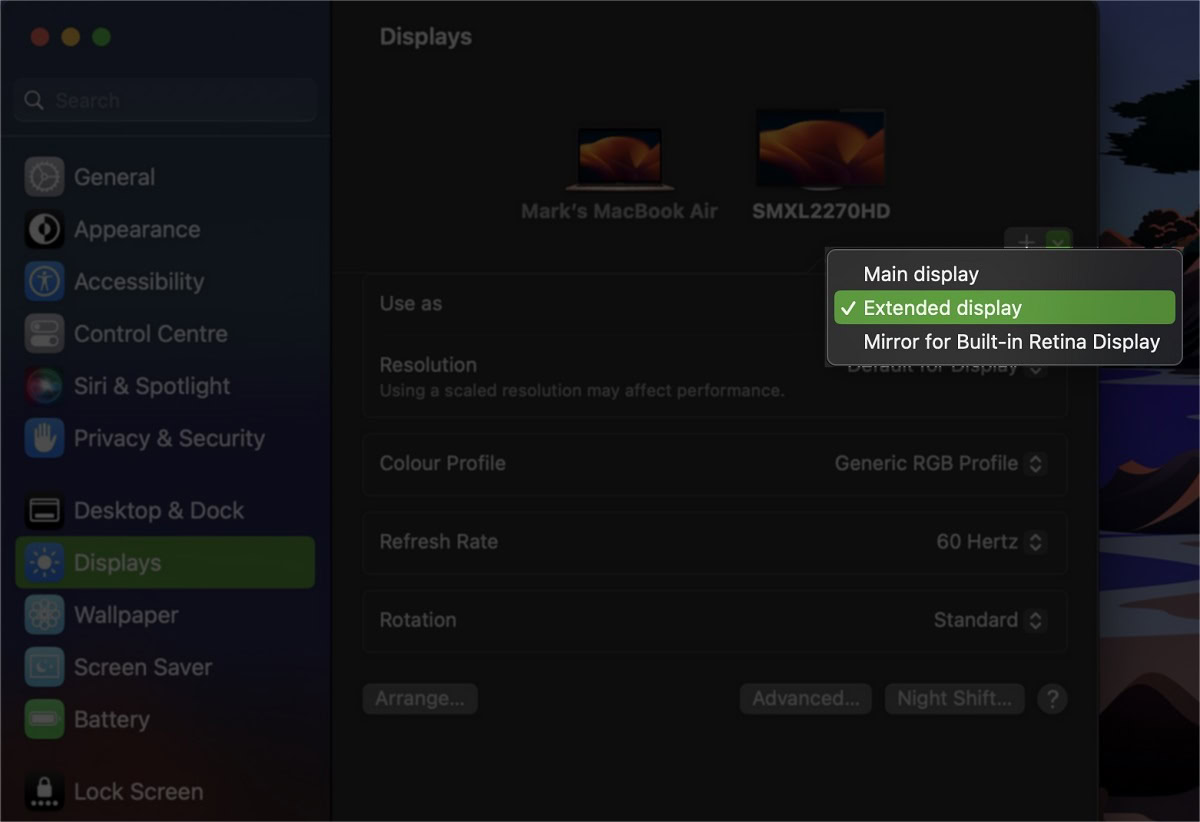
You can also set it up so that, if you have a nearby Mac or iPad, you can move your mouse cursor between the devices.
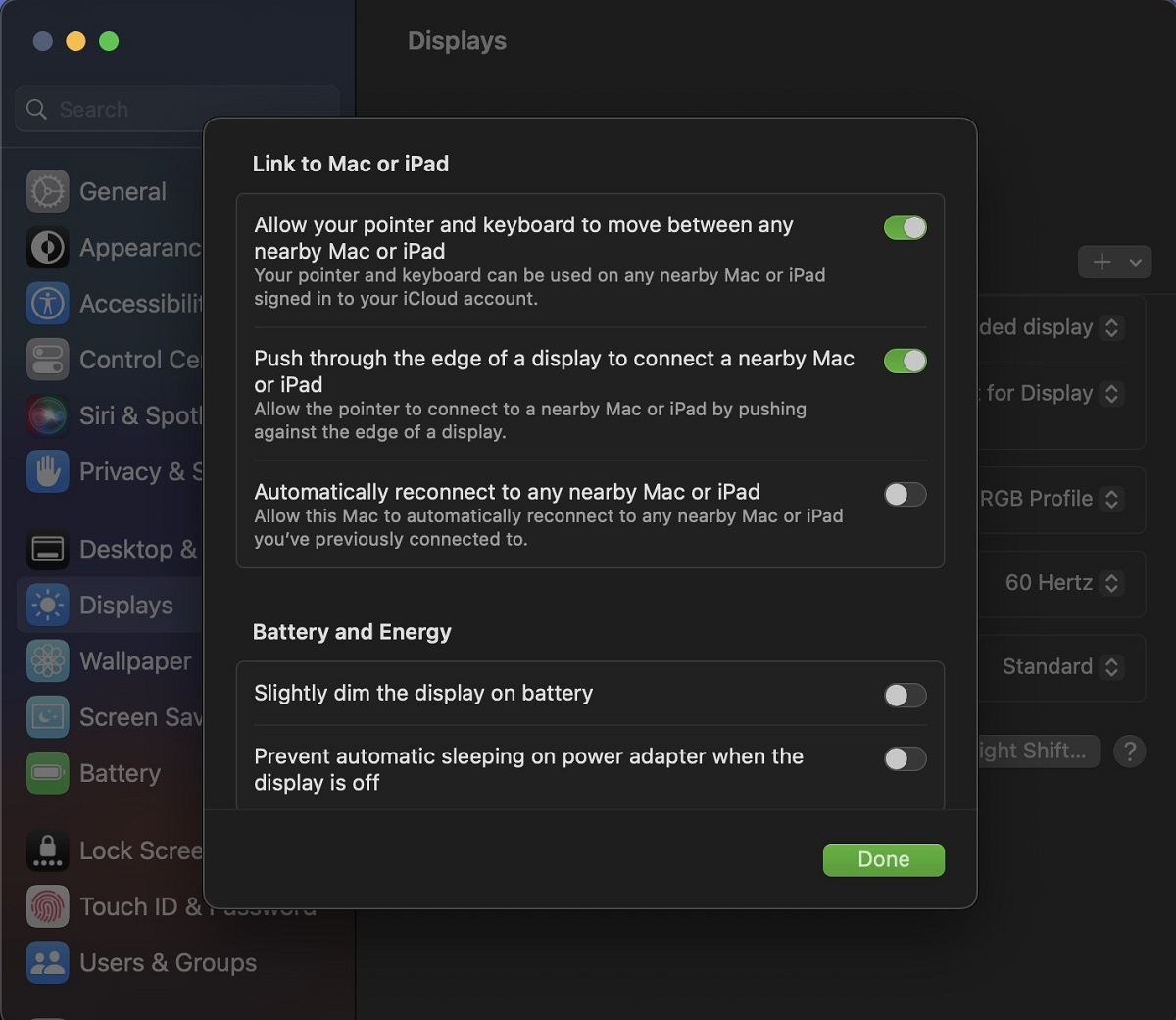
FAQs
Yes, if you have an HDMI to DisplayPort adapter. However, most of these are built to connect a DisplayPort laptop to an HDMI monitor rather than the other way around. You will need to specifically look for one that connects an HDMI laptop to a DisplayPort monitor.
You will need a monitor, the monitor’s power adapter, a laptop, the laptop’s charger, and a connecting cable (HDMI, USB-C, or DisplayPort). You may also consider plugging in an external keyboard and mouse.
Yes. To do so, visit Duplicate or extend to a connected display in Windows settings. Select Extend these displays to use both your laptop screen and monitor simultaneously.
You can duplicate (or ‘mirror’) your display by going to Duplicate or extend to a connected display in Windows settings. After that, select Duplicate these displays.
If you are running into a port problem—for example, your monitor takes HDMI, but you don’t have an HDMI port on your computer—you must acquire an adapter. There are adapters to create connections between many kinds of ports. For example, USB-C to HDMI and HDMI to VGA. Find the right adapter to make your personal port situation work.